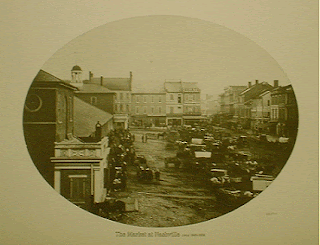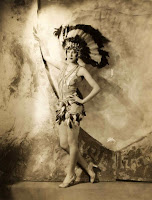My great grandparents emigrated to New York in 1903 and settled on East 117th Street in New York City. The area back then was called Italian Harlem and each of the different streets between East 97th and East 117th were settled by people from the same area of Italy. You might have Neopolitans on E. 112th, people from Calabrese on E. 113th and people from Sicily on East 117th. My family was from Messina in Sicily, so I have to figure at least some of the people in their neighborhood were also Sicilian. This was the first area to be called Little Italy rather than the lower east side which is known by that name today. It was filled with tenements and newly arrived people who were trying to eke out a living while working toward the American dream.
By 1920, my great grandfather Pasquale Rotante and his wife Grazia were well settled and still had their three children at home, Dominick who was 19, Agatha who was 18 and Anthony who was 11. The census lists them by their nicknames - Pasquale is listed as Patsy, Grazia as Gracie, Agatha as Ida and Anthony as Tony. They also misspell their name as Rotanti.(On a side note, my grandmother's name was Agatha Marie, but she was called Ida. When she met my grandfather, his family started calling her Ada and it stuck).
I think a block party would not have been uncommon there. They lived around the corner from Our Lady of Carmel and there is still a huge festival celebrated there called the Dance of the Gigilio and even back in the 1920's thousands attended it. Celebrating outdoors was a welcome relief from the stale atmosphere inside the tenements.

There were eleven families in their tenement that are listed on the 1920 census. It is fascinating to note there is one family from Austria who were Hungarian; it must have been interesting for them to be immersed into the Italian culture. Half the people were born in Italy, the rest mostly in New York. The parents other than the Hungarian family, all came from Italy. Children ranged from one year of age to my great uncle who was the oldest still at home at the age of 19. Most of the heads of families were in their late 30's to early 40's. Quite a few ladies worked in their home make braid loops, braiding, crocheting and beading, the rest were homemakers. The men worked at a variety of jobs. My great grandfather was a cutter in a shoe factory, his son Dominick worked there also as a machine operator. My great grandmother was a milliner. The other men had jobs as a cigarette maker, milk porter, piano maker, sidewalk mender, optical machine operator and coat operator. Samuel Giutton was a muscian by trade and I imagine he could have provided entertainment as they partied. Tony Communale was an ice man and perhaps was able to supply ice for Italian ices to cool everyone down.
Ladies would have made braciole, sausage and peppers, caponata, calzones and maybe some fried calamari. Other women would have added desserts of zeppoles, ricotta cookies, cannoli and cream cake. Maybe one of them would have run over to Marrone Bakery for some fresh bread to serve alongside Spaghetti and meatballs - no one could celebrate without their "gravy" (spaghetti sauce for the uninitiated). While the mothers chatted on the stoops about their children and the 19th amendment guaranteeing women's suffrage, men were probably discussing how Babe Ruth was doing with the Boston Red Sox, The Yankees and current events about the Russian Army.
The children would be having so much fun - if it was hot, you can be sure someone opened a fire hydrant to cool themselves off, but they also would have played traditional games. There was Lupo Della Ore where one
player is the "lupo" ("wolf"), and stands with his back to the
others who form a line at a designated distance from him. They players
call out "Lupo che ore sono?" ("Wolf, what time is it?"), and the wolf
answers with a number. The players can then take that many steps toward
him, and ask again. If, instead of a number, the wolf responds with "Ho
fame!" ("I'm hungry!"), he can turn around and try to tag as many of the
children as he can before they make it safely back home.
line. Regina, Regina Bella was fairly similar to the game Mother May I which I played as a child. One person was the queen and the others called out to her
Regina Regina bella, quanti passi devo
fare per arrivare al tuo castello
con la fede, con l’anello,
con la punta del coltello?"
("Beautiful, beautiful Queen,
how many steps
do I have to take to get to your castle
with the faith, with the ring,
with the tip of the knife?")
The queen then calls out both a number and the name of an animal. The
children must take that many steps toward her, walking in imitation of
the animal named. The first child to reach the queen wins. Another popular game was Fazzoletto peo peo which is basically duck, duck goose!
At last the sun would set and all would return to their apartments, ready for another day in the big city














































